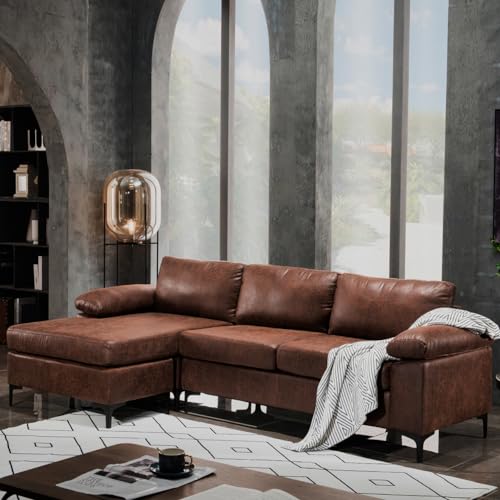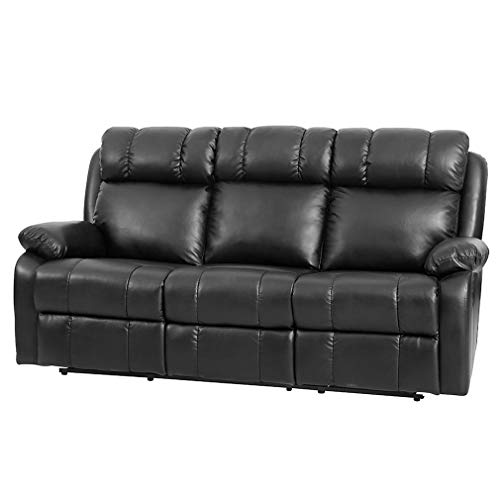The 12 Worst Types Genuine Leather Sofa Accounts You Follow On Twitter
페이지 정보

본문
 How to Spot a Genuine Leather Sofa
How to Spot a Genuine Leather SofaThis sofa makes a fantastic addition to any room. The leather upholstery is soft and silky. Customers love its simple style and premium, genuine leather upholstery.
Untrained eyes might have trouble in discerning the difference between real and faux leather. Here are six ways to help you differentiate between the two: 1. The rough edges.
1. Look at the label
Genuine leather has a distinctive style and feel that's difficult to replicate. It's also robust and easy to clean. It also doesn't absorb body oils, making it ideal for those with allergies. Not all leather sofas are created equal. Some retailers have even been famous for using PVC as genuine cheap leather sofa.
To avoid being scammed, it's crucial to understand the different types of leather. This includes determining the differences between full grain and top grain leather, as well as assessing the quality of the upholstery material. Discerning retailers are more than pleased to provide this information and more, so don't hesitate to ask!
The first step to identifying authentic leather sofas is to check the label. It should clearly state what type of leather the sofa is upholstered with, along with any other materials like fabric or cotton. In addition, reputable suppliers will have clear policies regarding returning or exchanging items in the event you aren't satisfied with your purchase.
If the sofa doesn't have any label, you can still work out the authenticity of the sofa by examining the fabric backing or by opening the cushion casing to look for synthetic material. You can also check the texture of the leather to determine if there are any bumps or imperfections. These are indications that the leather is fake or has been bonded.
You can also test the sofa's integrity by rubbing the surface. Genuine leather will have a soft and smooth texture, whereas faux leather or bonded leather will be rougher and more akin to suede. Furthermore you should be able to feel the difference between the wrinkles and bumps of genuine leather and the printed patterns on faux leather.
A genuine leather sofa is more expensive than its faux counterpart, but it's going to last longer. It can become an important family heirloom with time. Place your leather sofa in an airy cool, cool space, away from heaters, fireplaces, and air cooling units. This will minimize the damage caused by heat, humidity and Ozone. You can also use leather protection creams to keep your sofa soft and sturdy.
2. Take a look at the back
If the label doesn't tell you what kind of leather sofa is, you need to get up-close and intimate with it. The scent, the texture and the backing will be clear indicators of authenticity.
If you touch the surface of genuine leather, it will not feel smooth and perfect. This is because animal hides have different pores which allow them to breathe. A product that feels completely smooth may be fake leather.
Check for bumps or uneven surfaces. Genuine leather is prepared by buffing away a portion of the rough outer layer. However, if the material you use to cover your sofa is made of top-quality leather, it should still have a few bumps.
You can also test the leather by running your finger over it and pressing into it. If the leather is real, it will stretch and wrinkle like human skin. This means it's capable of breathing, ensuring that the leather doesn't get dry and cracked over time.
Faux leather is uniform in pattern due to the fact that it is printed, while genuine leather is prone to imperfections that add to the beauty and durability of the leather. This includes scratches, creases and marks. Genuine leather will be supple and a bit stiff when it's brand new. However, it shouldn't crack or dry out when you treat it regularly using a cream for protection against leather.
To save money, certain furniture manufacturers make use of a mix of synthetic and real leather for their products. The contact areas, such as seats and armrests, as well as backs, are made from real leather, while the non-contact portions such as the outside and base arms are upholstered with a less-expensive polyurethane or leather-like synthetic fabric. Even if a couch is labeled as genuine leather, you should take a close look at the backing to determine if the couch is genuine leather.
Labels and pricing can guide you in the right direction, but to truly ensure that a sofa is genuine leather, it's important to get up close and close to it. Take a whiff, rub it and look at its back for a backing made of polyurethane that is a clear sign that it's not genuine leather.
3. Look at the seat
A genuine leather sofa's seat is also an excellent indicator of the quality. Genuine leather is different from faux leather, which is a combination of materials. It has a distinct texture and feels smooth when you touch it. Be aware of bumps on the surface as well as a deep, natural smell. These features distinguish genuine leather from fake or low-quality imitations.
If the leather is stitched in a single, large piece, that's another warning sign. Although this isn't uncommon when using faux leather, if you notice this on genuine top-grain leather, it's most likely a sign that the sofa is not of good quality and should be avoided.
The price and the label might give you an idea however the only reliable way to know is to feel the furniture. Real leather should not be perfect and not feel uneven. It will also have large wrinkles on the surface and rough edges. Genuine leather is soft and different than synthetic materials. The temperature of the furniture can be a sign of whether it is genuine.
A leather sofa is a mainstay in interior design because it's elegant, durable and long-lasting. It is also easy to clean and resistant to liquid spills. This makes it an ideal choice for families who have children or pets. Genuine leather is a timeless fashion that will never go out of style. It's also available in different price ranges.
For a timeless leather couch that can stand the test of time, look into the Pottery Barn Turner. While this two-seater is priced higher however, it's constructed with high-end top-quality leather and features a timeless design that won't age quickly. It's a great choice for those with small rooms, too, because it comes in three sizes and is compact enough to fit into most rooms.
If you're looking for something bit more contemporary, look at this All Modern Geo Genuine Leather Sofa. The couch is a Mid Century Modern Leather Sofa-century modern design with an angular, sleek frame and cylindrical pillows that are a perfect blend of functionality and form. While the frame is constructed from plywood, composite and plastic, the sofa features genuine leather only in the seating area which is a step up from Ikea's faux-leather couch, which was awarded CHOICE's "Shonky" award in 2015.
4. Look at the smell
Genuine leather has a distinct smell that is a natural organic skin scent that can't be replicated. If the sofa that you're trying to purchase has a strong, artificial scent it's not real. It is usually due to the chemicals used to make the leather. They remain in the furniture after it's been manufactured and even after you bring it home.
A great way to determine the quality of a leather sofa is to run your fingers along the surface. Genuine leather will feel rough and include bumps and lumps, just like human skin. If it feels soft and cold, it is most likely faux or the leather is bonded.
You can also remove one of the cushions to inspect the back. False and bonded hides have a polyurethane back to support the manufactured upholstery. True leather has an untreated back like coarse suede. If you see a woven fabric backing, it's an obvious sign that the couch isn't genuine leather.
Peter says that the best method to determine if a sofa is real is to gently rub your fingernails on the surface. The roughness of the leather will make your fingernails duller and the leather should stretch and wrinkle a little. It will also feel warm to the contact.
Another way to tell whether a sofa is genuine is to turn it over on its side and check the back of the sofa. Faux and bonded leather will have a plastic covering on the back of the sofa while genuine leather will be one continuous piece of leather that covers the entire back of the sofa.
Consider how often you'll use your leather sofa and how long it is expected to last when choosing the quality. The more you use a sofa, the more it'll need to be taken care of. Peter suggests regular and gentle cleaning with an exclusive conditioner for leather to maintain the suppleness of the leather and to prevent it from becoming hard and dry.

- 이전글어덜트월트 2베드신 보는곳 (hd_보기)ox다운_로드 ver #어덜트월트 2베드신 무료보기 24.07.22
- 다음글The Rim Rambler Monster Butt Plug-- 10 Inch Discreet Distribution 24.07.22
댓글목록
등록된 댓글이 없습니다.

